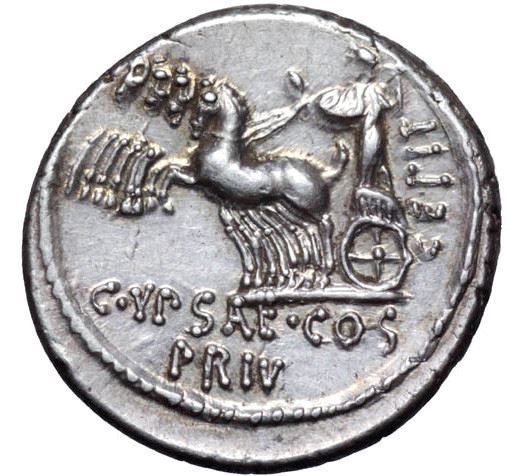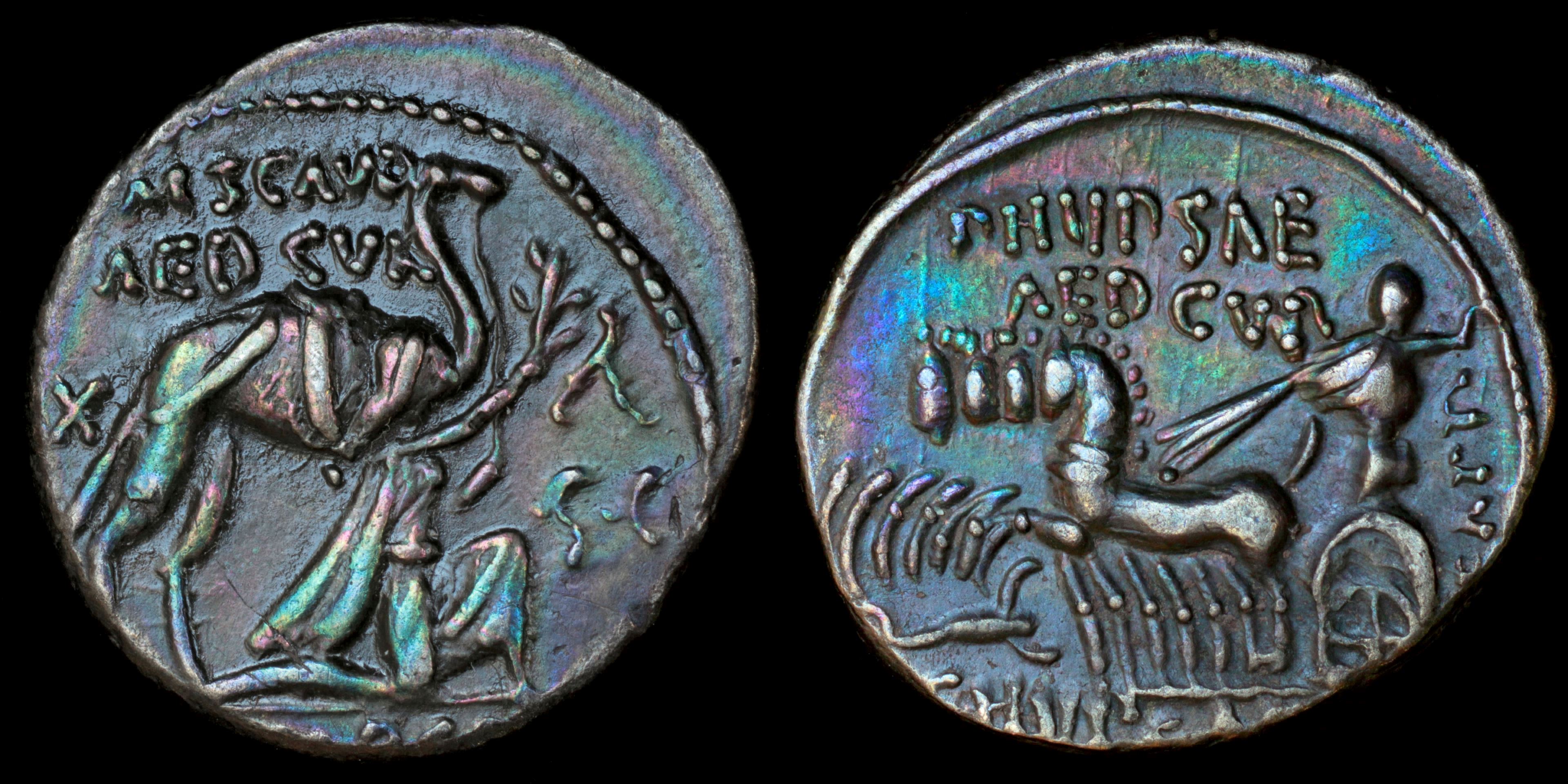Publius Plautius Hypsaeus was one of the moneyers for the year 60 BC.
As Praetor and an ally of Pompey, Hypsaeus was later tried under Pompey's retroactive laws on violence and corruption (52 BC) for bribery. In 53 BC he was a candidate for the consular position, against Milo. Hypsaeus' gangs were reinforced by Clodius and fights broke out between the competing parties.
Gens Plautia, sometimes written Plotia, was a plebeian family at ancient Rome. Members of this gens first appear in history in the middle of the fourth century BC, when Gaius Plautius Proculus obtained the consulship soon after that magistracy was opened to the plebeian order by the lex Licinia Sextia.
Gens Plautia, sometimes written Plotia, was a plebeian family at ancient Rome. Members of this gens first appear in history in the middle of the fourth century BC, when Gaius Plautius Proculus obtained the consulship soon after that magistracy was opened to the plebeian order by the lex Licinia Sextia.

(1)
M. Aemilius Scaurus
|
P. Plautius Hypsaeus

Obverse: Aretas, king of Nabatea, kneeling beside camel raising olive branch with fillet M SCAVR / AED CVR / EX S C / REX ARETAS
Reverse: Jupiter in quadriga left, holding reins and thunderbolt, scorpion right P HYPSAE / AED CVR / CAPT / C HYPSAE COS / PREIVE
Diameter:
18 mm
Die Orientation: -
Weight: 4 g
Die Orientation: -
Weight: 4 g
Marcus Aemilius Scaurus and Publius Plautius Hypsaeus. The moneyers were Curule aediles in 58 BC. Scaurus became praetor in 56 BC and Hypsaeus in 55 BC.
Scaurus lost his father when he was young. He was raised by Sulla as a step-son. He served as quaestor under Pompey and as proquaestor in the third Mithridatic war in 66-61 BC. In the same time conflict between Aristobulus II and Hyrcanus II broke out in Judea. Nabatean king Aretas III supported Hyrcanus and besieged Aristobulus in Jerusalem. Scaurus was send as intermediary. He sent Aretas back and settled the conflict in favour of Aristobulus. Later Pompey accused him of bribery and removed Aristobulus in 63 BC. Scaurus moved to Petra then he was called back after payment of 300 talent fine.
Hypsaeus also served as quaestor under Pompey. Reverse commemorates conquest of Volscian town Priverna by moneyer's ancestor Gaius Plautius Decianus Hypsaeus in 330-329 BC.
Scaurus was the first who depicted event from his own life on coins.
Crawford 422/1b, SRCV I 379, Sydenham 913, RSC I Aemilia 8
